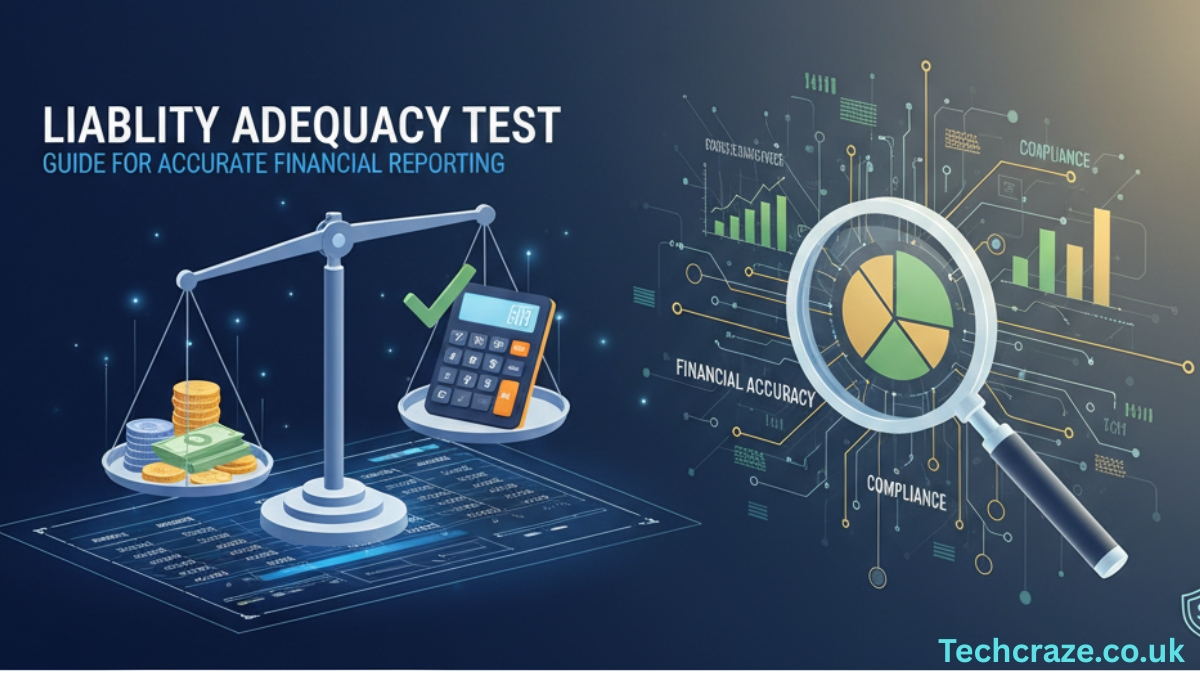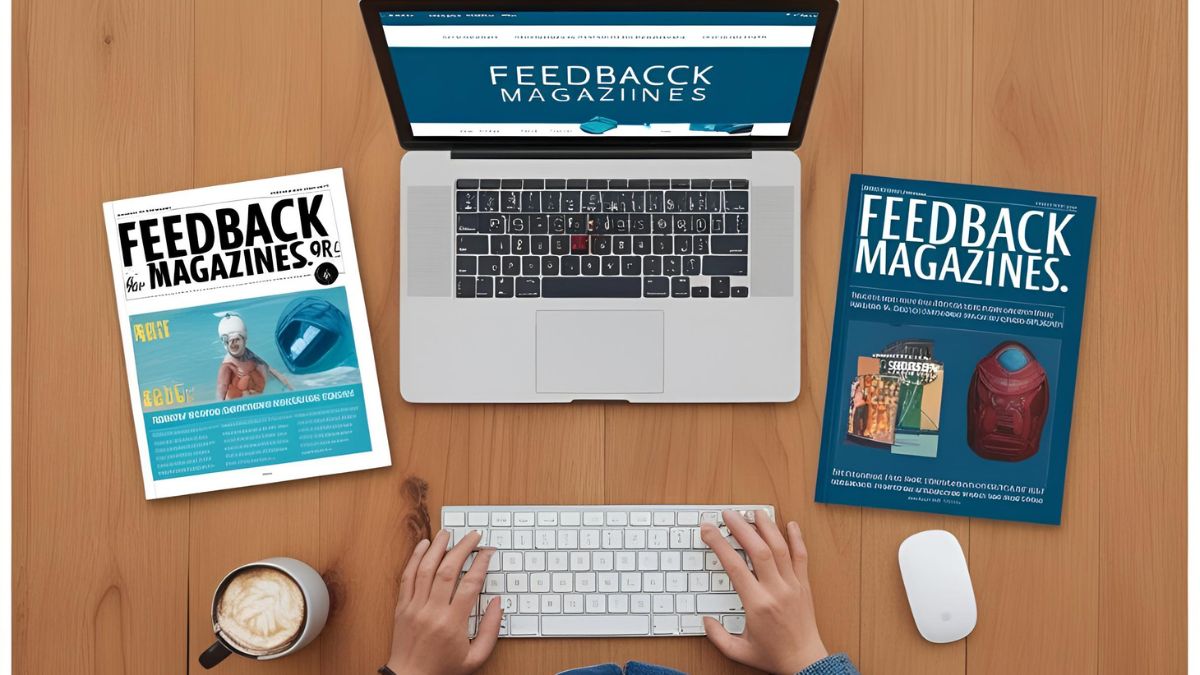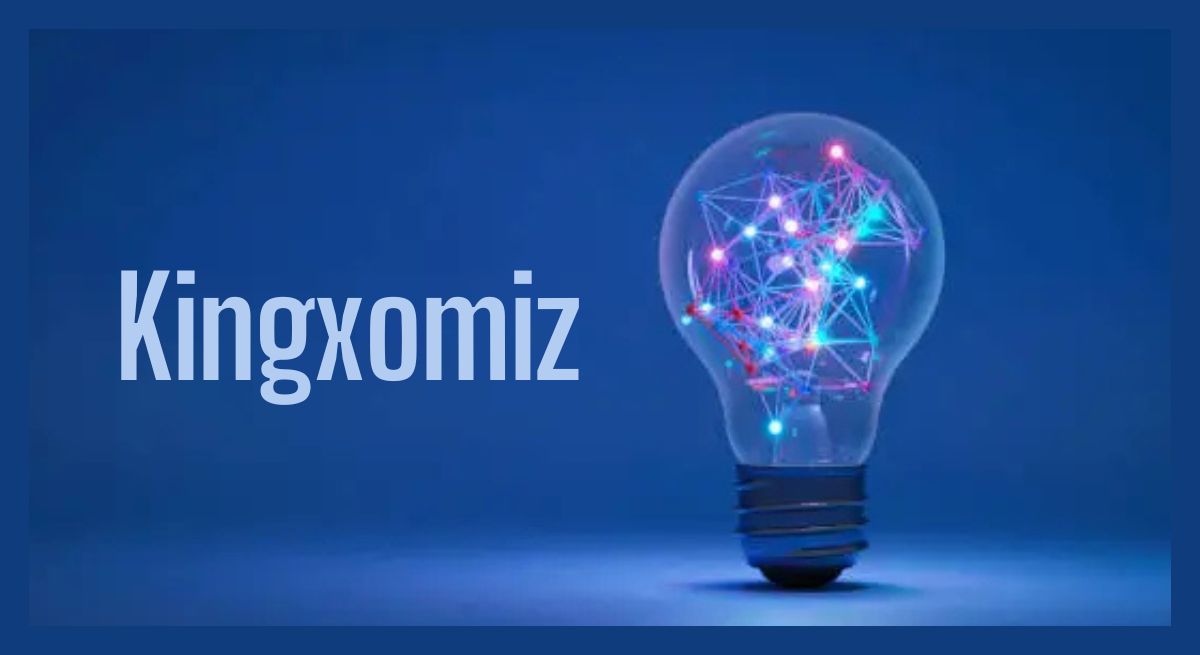Business
Why Every Business Needs a Client Relationship Partner

“A client relationship partner is the person who builds long-term trust between a company and its clients. This role focuses on understanding client needs, managing expectations, solving problems quickly, and finding new opportunities for collaboration. A strong client relationship partner improves communication, strengthens loyalty, and helps businesses grow by keeping clients satisfied and informed. They act as a strategic advisor who connects clients with the right solutions, ensures smooth project delivery, and maintains a professional relationship that benefits both sides.”
A Client Relationship Partner is a key figure responsible for managing long-term relationships between a company and its clients. This role focuses on understanding client needs, solving problems early and maintaining a high level of satisfaction throughout the partnership. In competitive markets, the success of a business often depends on the strength of these relationships.
Companies use Client Relationship Partners to create trust and consistency. Instead of dealing with multiple representatives, clients interact with one knowledgeable partner who understands their goals. This creates smoother communication and helps both sides work more efficiently.
This role is becoming more important as organizations shift toward personalized service. Clients expect fast responses, tailored solutions and ongoing support. A dedicated partner ensures clients receive the attention they need, which leads to higher retention and long-term loyalty.
Why Businesses Need Client Relationship Partners
Client expectations have changed. Today’s clients want quick answers, strategic guidance and reliable service. A Client Relationship Partner meets these expectations by acting as a single point of contact who manages communication, resolves issues and strengthens trust.
Having a dedicated partner helps companies prevent small problems from turning into major concerns. The partner stays in regular contact with the client, monitors project progress and identifies challenges early. This proactive approach reduces misunderstandings and supports better decision-making.
A Client Relationship Partner also helps increase revenue. When clients feel valued and supported, they are more likely to renew contracts, purchase additional services and refer new customers. This makes the role essential for companies that depend on repeat business.
Key Responsibilities of a Client Relationship Partner
A major responsibility of the role is understanding client goals. Partners gather information, analyze expectations and map out strategies that align with the client’s long-term vision. This ensures that solutions are customized and effective.
Another important part of the job is coordination. The Client Relationship Partner works with internal teams such as marketing, sales, operations and customer support to deliver a seamless experience. They communicate updates, track performance and ensure the client’s needs are met on time.
The partner also manages feedback and improvement plans. By collecting insights from clients, they help the company improve its services and offer more value. Regular check-ins, performance reviews and progress reports are common tools they use to maintain engagement.
Skills Needed to Become an Effective Client Relationship Partner
Strong communication skills are essential for this role. A good partner listens carefully, explains solutions clearly and builds trust through consistent and honest conversations. This helps avoid confusion and ensures both sides understand expectations.
Problem-solving is another important skill. The partner must be able to identify challenges quickly and provide practical solutions. This requires analytical thinking, industry knowledge and the ability to collaborate with different teams.
Emotional intelligence plays a major role as well. Understanding client emotions, motivations and concerns helps partners respond more effectively. This builds stronger relationships and creates a positive experience during every interaction.
How the Role Supports Business Growth
Client Relationship Partners contribute to growth by improving retention. Keeping an existing client costs far less than acquiring a new one. When clients feel supported and valued, they stay longer and deepen their engagement with the company.
These partners also discover new opportunities through conversations and feedback. By understanding how a client’s needs evolve, they can recommend upgrades, new services or additional features that support the client’s goals. This naturally increases company revenue.
The role also improves brand reputation. Satisfied clients share their positive experiences through reviews, referrals and long-term partnerships. This creates a strong image for the company and helps attract new clients without heavy marketing costs.
Common Challenges Faced by Client Relationship Partners
One challenge is managing high expectations. Clients often expect instant responses and perfect results. The partner must balance these expectations while maintaining realistic timelines and solutions.
Another challenge is handling conflicts. Misunderstandings, delays or changes in requirements can create tension. Partners need strong conflict-resolution skills to address issues calmly and professionally.
Time management can also be difficult. A Client Relationship Partner may handle several clients at once. They must prioritize tasks effectively, keep track of deadlines and ensure all clients receive consistent attention.
How to Build Trust as a Client Relationship Partner
Trust starts with transparency. Sharing updates, risks, progress and challenges openly helps clients feel informed and confident in the partnership. Even when problems arise, honesty strengthens the relationship.
Reliability is another trust factor. Delivering work on time, following through on commitments and maintaining consistent communication all reinforce credibility. Clients value partners who can be counted on during both smooth and difficult times.
Finally, personalization creates stronger trust. When partners remember client preferences, business goals and communication styles, it shows dedication and care. This makes clients feel understood and respected.
Tools and Technologies Used by Client Relationship Partners
Customer Relationship Management (CRM) systems are essential. Platforms such as HubSpot, Salesforce and Zoho help partners track interactions, manage tasks and analyze client data. This keeps information organized and easy to access.
Project management tools support coordination. Applications like Trello, Asana and Monday.com allow teams to collaborate, assign tasks and monitor project progress. This ensures everyone stays aligned.
Communication platforms are also important. Video calls, chat apps and email tools make it easy to stay connected with clients. These tools allow partners to provide quick support and keep the flow of information smooth.
How to Measure Success in the Client Relationship Partner Role
Success is often measured through client satisfaction scores. Surveys, reviews and feedback sessions help determine how clients feel about the partnership and whether their needs are being met.
Retention rates are another key indicator. If clients stay with the company longer and renew their contracts, it is a clear sign that the partner is performing well. Repeat business reflects strong trust and consistent value.
Additional metrics include revenue growth from the client, the number of referrals they provide and their engagement level in meetings and discussions. These indicators show how deeply they value the relationship.
Future of the Client Relationship Partner Role
The role will continue to grow as companies place more importance on personalized service and long-term partnerships. Automation may help with routine tasks, but the human side of the role will remain essential.
Artificial intelligence will support partners by providing insights, predicting client needs and improving communication. However, empathy, trust-building and strategic guidance will always require human involvement.
As industries become more competitive, companies will invest more in trained Client Relationship Partners. Their ability to maintain strong relationships will play a major role in shaping business success.
Conclusion
A Client Relationship Partner is critical to business success. From managing communication and understanding client needs to identifying new opportunities and improving retention, the role supports both clients and the company. As expectations continue to rise, organizations will rely even more on dedicated partners who can deliver consistent value, strong communication and long-term trust.
FAQs
What is a Client Relationship Partner?
A Client Relationship Partner manages long-term relationships with clients, ensures smooth communication and helps maintain trust and satisfaction.
What skills does a Client Relationship Partner need?
Strong communication, problem-solving, emotional intelligence and time management are essential for success in this role.
How does this role support business growth?
By improving client retention, identifying new opportunities and ensuring clients receive consistent value, the role directly supports revenue growth.
Which tools do Client Relationship Partners use?
They commonly use CRM systems, project management tools and communication platforms to stay organized and deliver timely support.
How is success measured in the Client Relationship Partner role?
Success is measured using client satisfaction, retention rates, renewals, revenue growth from clients and referral activity.
Crypto
LessInvest.com Guide: Learn Stocks, Crypto & Real Estate Investing

“LessInvest.com offers a supportive approach to investing by educating users on various investment categories, such as stocks, crypto, real estate, and index funds. The platform emphasizes clarity and confidence, making it a valuable resource for individuals looking to build long-term financial stability and invest with ease.”
LessInvest.com positions itself as a platform designed to make investing easier for people at all experience levels. It focuses on simplifying financial concepts and giving users access to educational material, market insights and helpful tools. The platform is structured in a way that removes confusion and makes it easier for beginners to take their first steps without feeling overwhelmed.
It also provides guidance for users who want to explore different investment types. Whether someone is curious about stocks, real estate, crypto or long-term index investing, the platform breaks down these topics in a clear and practical way. This balanced approach allows users to build confidence and understand what suits their financial goals.
The main idea behind LessInvest .com is to help people invest smarter by giving them straightforward information, practical tips and easy-to-use resources. For many users, this becomes a helpful starting point for building long-term financial stability.
How LessInvest.com Helps Beginners Get Started
The platform focuses heavily on first-time investors who want simple, supportive guidance. Many people hesitate to start investing because they assume it requires expert knowledge. LessInvest .com aims to change this mindset by offering step-by-step guidance that is easy to follow.
It explains basic terms, teaches simple investment strategies and introduces users to the importance of financial planning. Instead of pushing users into complicated decisions, it helps them understand how investing works and why consistency matters more than complexity.
This beginner-friendly structure reduces the fear of making mistakes and encourages users to take small but confident steps toward their first investment.
LessInvest.com and Its Focus on Crypto Investing
Crypto is one of the fastest-growing investment categories, and many new investors want clarity before entering this market. Lessinvest.com Crypto helps users understand the fundamentals without overwhelming them with technical jargon. It explains market trends, volatility, risk levels and the factors that influence price movements.
The platform also highlights how crypto can be used as part of a diversified portfolio. Users can explore different digital assets and learn the pros and cons of entering the market. This balanced view helps them make decisions based on clear information rather than emotional reactions.
By presenting crypto in a structured and easy-to-understand way, LessInvest .com makes this complex sector more accessible.
Real Estate Investing Through LessInvest.com
Real estate is another focus area on LessInvest.com. Many people want to invest in property but often believe it requires large amounts of money. The platform breaks this misconception by explaining different types of real estate investments, including REITs and property funds.
It also provides insights on market conditions, long-term property growth and rental income strategies. These explanations help users see how real estate can balance a portfolio and add stable returns over time.
Lessinvest.com Real Estate section provides users with the knowledge they need to explore property investments confidently, even if they are starting with smaller amounts.
Investment Options on LessInvest.com
Lessinvest.com invest does not limit users to one type of investment. Instead, it provides a variety of options and explains how each one works. Users can explore stocks, crypto, real estate, index funds and other categories in a clear and structured format.
The platform highlights the differences between short-term and long-term strategies. It also explains the risk level associated with each category so users can choose options that fit their financial goals. This makes it easier for people to build a customized investment plan.
The availability of multiple categories allows users to diversify and protect their portfolios from unexpected market fluctuations.
How LessInvest.com Teaches People to Invest Money
One of the strongest features of Lessinvest.com how to invest money is its guidance on how to start investing money. The platform helps users create a simple plan based on their income, goals and risk tolerance. It explains why planning matters and how to avoid common mistakes.
Users also learn about the benefits of investing early and how small, consistent contributions can grow over time. This approach motivates beginners to plan their finances and understand the power of compounding.
Instead of using complicated financial terms, It uses clear, natural language that anyone can follow. This makes learning and implementation easier for new investors.
LessInvest.com and Stock Market Investing
Stocks are a popular choice for many investors, and Lessinvest.com stocks to invest in provides helpful guidance in this area. The platform explains how the stock market works, what factors influence company performance and how users can identify strong opportunities.
It also highlights the importance of research and long-term strategy. By learning how to analyze sectors, trends and company fundamentals, users can make more informed decisions. This educational approach prepares users to navigate the stock market confidently.
The stock section is especially helpful for beginners who want to learn how to choose stocks without relying on guesswork.
Investing in the S&P 500 With LessInvest.com
Index investing is one of the safest strategies for long-term investors, and LessInvest.com explains this in a simple and practical way. The platform highlights why the S&P 500 is popular among investors worldwide.
Users learn that the index represents the largest companies in the U.S. and has a strong track record of growth. LessInvest.com explains how index investing reduces risk and why it is suitable for both beginners and experienced investors.
This guidance helps users decide whether the S&P 500 fits their financial plan and long-term goals.
Encouraging Users to Invest More Strategically
LessInvest.com encourages users to invest more strategically rather than emotionally. It explains why adding more funds at the right time can support long-term growth. Users also learn how to identify opportunities and remain consistent during market changes.
The platform helps users understand that successful investing requires patience and planning. By giving people the confidence to continue investing over time, LessInvest.com supports better long-term financial outcomes.
This strategic approach motivates users to stay committed to their investment journey.
Security, Trust and User Confidence on LessInvest.com
Security is an important factor for every investor. LessInvest.com emphasizes safe investing habits and guides users on how to protect their personal information. It encourages users to choose secure platforms and avoid high-risk decisions that are not backed by research.
This guidance helps users build confidence and reduces the fear of losing money due to avoidable mistakes. The platform’s emphasis on safety makes it a useful resource for investors who want to make smart, well-informed decisions.
Conclusion
LessInvest.com provides a clear and supportive approach to investing. It helps users understand different investment categories and gives them the tools they need to build long-term financial stability. Whether someone wants to learn about stocks, crypto, real estate or index funds, the platform offers simple and helpful guidance.
By focusing on education, clarity and confidence, LessInvest.com becomes a valuable resource for anyone who wants to start investing with ease.
FAQs
What is LessInvest.com?
LessInvest.com is an online investment platform that provides simple tools, market insights, and portfolio management features for new and growing investors.
Is LessInvest.com beginner-friendly?
Yes, the platform is designed with a simple layout, easy navigation, and educational tools to help beginners understand investment basics.
What features does LessInvest.com offer?
It includes portfolio tracking, market insights, financial calculators, and real-time updates to help users make informed decisions.
Is LessInvest.com safe to use?
The platform uses modern security measures to protect user data and keep accounts secure, creating a trustworthy environment for investors.
How does LessInvest .com compare to other platforms?
It stands out for its clean interface, beginner-focused tools, and easy learning experience, making it ideal for new investors.
Business
Liability Adequacy Test: Guide for Accurate Financial Reporting

“The Liability Adequacy Test is essential for the financial health of insurance companies, enabling them to detect reserve deficiencies, enhance reporting accuracy, and manage risk. By employing updated assumptions and data-driven methods, insurers ensure compliance with global regulations and promote long-term stability and growth.”
The liability adequacy test is an important financial assessment used in insurance and accounting to ensure that the liabilities recorded on a company’s balance sheet are enough to cover future obligations. The test helps organizations confirm that their reserves, estimates, and provisions will meet the actual cost of claims or commitments. This prevents unexpected financial gaps that could affect stability or investor confidence.
Companies conduct this test regularly to stay aligned with accounting standards and industry regulations. It also offers transparency by showing whether the financial assumptions behind liabilities are realistic. When the test reveals insufficient reserves, companies must adjust their liabilities immediately, which strengthens accuracy in financial reporting.
Why the Liability Adequacy Test Matters
The test is vital because it ensures that financial statements reflect true economic obligations. Without it, companies risk underreporting liabilities, which can mislead stakeholders and inflate profitability. Accurate liability recognition supports informed decision-making for investors, managers, and regulators.
It’s also a key requirement under international financial reporting standards. These standards emphasize that companies must regularly check the adequacy of their liabilities to prevent future solvency issues. A reliable test helps reduce financial surprises and promotes trust in the company’s long-term planning.
How the Liability Adequacy Test Works
The process involves comparing the carrying amount of liabilities with the present value of expected future cash flows. These cash flows may include claims, expenses, benefits, and any additional related costs. If the estimated future cash flows exceed the liabilities recorded, then the company must increase its reserves.
Actuarial models are often used to perform these calculations. These models consider factors like historical claim data, market trends, inflation, and risk predictions. The result is a more precise estimate of future obligations that helps companies maintain financial health.
Key Components Included in the Test
Several elements are evaluated when performing the test. These include claim reserves, premium liabilities, and anticipated expenses linked to managing future claims. The test also looks at potential changes in the economic environment that may influence costs over time.
Each component plays a role in shaping the final assessment. By reviewing these details, companies gain deeper insight into how their financial position might shift. This helps improve accuracy and reduces the chances of unexpected financial strain later on.
Role of Actuaries in the Test
Actuaries are central to the liability adequacy test. They bring analytical expertise to evaluate risk, calculate future obligations, and build forecasting models. Their skill in understanding trends and interpreting data makes the test more reliable and objective.
Their involvement also ensures that the test meets professional and regulatory standards. By using advanced methods and current market information, actuaries help keep the company’s liability estimates up-to-date and trustworthy.
Liability Adequacy Test in the Insurance Industry
The insurance sector relies heavily on this test because future claims and benefits make up a large part of its financial responsibilities. Insurers must ensure that premiums collected today will be enough to pay for claims tomorrow. The test helps identify shortfalls early so insurers can adjust pricing, reserves, or strategies as needed.
Regulators also require insurance companies to maintain accurate reserves to protect policyholders. As a result, regular testing is essential for compliance, financial stability, and maintaining trust in the insurance system.
Implications of Failing the Test
When a company fails the liability adequacy test, it means that the liabilities on record are not sufficient. This triggers an immediate need to strengthen reserves, which may impact profitability and reported earnings. It can also affect the company’s reputation if stakeholders view it as poor financial management.
However, addressing deficiencies promptly helps the company avoid long-term problems. Increasing liabilities ensures that obligations will be met, which ultimately reinforces financial strength and transparency.
How Companies Adjust After the Test
If gaps are found, companies usually increase their provisions or reserves. They may revise their assumptions about risks, inflation, or future expenses to make estimates more realistic. This update helps future financial statements reflect a more accurate view of the company’s obligations.
Organizations may also review their pricing strategies or investment portfolios after the results. These adjustments support long-term growth and reduce exposure to financial uncertainty.
Benefits of a Strong Liability Adequacy Framework
A consistent and accurate testing framework helps companies stay ahead of financial challenges. It strengthens stability, supports risk management, and helps leadership make strategic decisions based on reliable data. With a strong framework, companies can adapt faster to market changes and improve forecasting accuracy.
The framework also boosts transparency, which is essential for gaining trust from investors, regulators, and clients. Reliable testing reduces the chance of hidden liabilities that could lead to sudden financial shocks.
Future Trends in Liability Adequacy Testing
As financial environments evolve, so will the methods used in liability testing. The rise of advanced analytics, artificial intelligence, and real-time data tracking is making the process more precise. These tools help companies identify risks earlier and refine projections with better accuracy.
Regulators are also updating their guidelines as industries grow more complex. This means companies will need to stay informed about changes and maintain flexible systems that adapt to new standards.
Common Challenges Companies Face
Many companies struggle with changing economic conditions that affect long-term estimates. Inflation, shifting market trends, and unpredictable claims can make calculations difficult. Another challenge is maintaining high quality data that reflects current realities instead of outdated assumptions.
Despite these challenges, companies that invest in strong data systems and expertise can achieve better results. Accurate information helps simplify the test and improves overall financial reliability.
Ensuring Accurate Data for the Test
Data quality is crucial because inaccurate or incomplete information can lead to misleading results. Companies need systems that collect and manage detailed historical data, market insights, and operational expenses.
Regular updates and audits help maintain data accuracy. When combined with actuarial insight, high-quality data leads to a more reliable liability adequacy assessment.
Companies that adopt modern risk tools will gain a competitive edge.
Conclusion
The Liability Adequacy Test is a crucial tool for ensuring the financial health and credibility of insurance companies. It helps organizations identify deficiencies in reserves, improve reporting accuracy, and manage risk more effectively.
By using updated assumptions, risk margins, and data-driven methods, insurers can maintain strong financial positions and comply with global regulatory standards. LAT serves not only as a regulatory requirement but as a strategic tool for long-term stability and growth.
FAQs
What is the Liability Adequacy Test?
The Liability Adequacy Test is a financial assessment used by insurers to check whether their recorded liabilities are enough to cover future policy obligations. If the test shows a shortfall, companies must increase their reserves to stay compliant.
Why is the Liability Adequacy Test important?
It protects policyholders and ensures the insurer remains financially stable. By reviewing expected cash flows and comparing them to current reserves, the company can detect underfunded liabilities early.
How is the Liability Adequacy Test performed?
Actuaries estimate future cash flows, including claims, expenses and premium income. These estimates are then discounted and compared with the recorded liabilities. If the liabilities are lower than the expected future outflows, an adjustment is required.
Which companies are required to perform a Liability Adequacy Test?
Insurance companies and financial institutions that manage policyholder liabilities must perform this test. It is a regulatory requirement under international accounting standards such as IFRS 4 and IFRS 17.
What happens if liabilities fail the adequacy test?
If liabilities are found to be insufficient, the company must immediately strengthen its reserves. This adjustment helps ensure accurate financial reporting and protects the company’s long-term solvency.
Business
Brand Elevation Scale Agile Solutions: Empowering Growth and Innovation

“Brand Elevation Scale Agile Solutions offer a transformative method for enhancing brands by integrating agile principles with brand strategy. This approach enables organizations to innovate quickly, adapt flexibly, and concentrate on providing exceptional customer value. It promotes collaboration and data-driven decision-making, making these solutions essential for thriving in today’s unpredictable market and achieving long-term brand success.”
In today’s rapidly changing business world, success depends on how quickly a brand can adapt and evolve. Companies no longer compete on products alone they compete on agility, innovation, and the ability to deliver value faster. This is where Brand Elevation Scale Agile Solutions comes in. It’s a modern approach that helps businesses grow strategically by merging agile practices with brand-building frameworks.
This method is not just about project management; it’s about creating a culture of flexibility, collaboration, and innovation that drives brand success. In this article, we’ll explore how Scale Agile Solutions work, how they elevate brands, and why they are becoming essential for sustainable business growth.
Understanding Brand Elevation in the Modern Era
Brand elevation is the process of strengthening a brand’s identity, value, and visibility in the market. It involves improving how customers perceive the brand and how effectively the company delivers on its promises.
In a fast-paced environment, traditional strategies often fail to keep up with consumer expectations. Modern customers want quick, personalized, and consistent experiences. Elevating a brand today means adopting agile frameworks that can handle constant change while maintaining the brand’s core message.
When a brand uses Scale Agile Solutions, it gains the ability to adapt its strategies in real-time, improve teamwork, and maintain a continuous focus on customer satisfaction all key drivers of brand elevation.
What Are Scale Agile Solutions?
Scale Agile Solutions are frameworks designed to extend agile principles beyond small teams to the entire organization. They ensure alignment between departments, streamline processes, and encourage cross-functional collaboration.
In simpler terms, these solutions help large companies act with the speed and flexibility of startups. They combine methodologies like SAFe (Scaled Agile Framework), Scrum, and Lean to improve performance and responsiveness.
When applied to brand management, these solutions allow marketing, development, and customer service teams to work together seamlessly. The result is faster product delivery, stronger brand consistency, and improved customer engagement.
The Connection Between Agility and Brand Growth
Agility is no longer just a tech term it’s a business survival skill. Brands that embrace agility can pivot quickly when market conditions change. This ability to adapt gives them a competitive edge.
By implementing Scale Agile Solutions, companies break down silos and create a transparent communication culture. This makes it easier to innovate and align brand goals across departments. Teams work iteratively, meaning they can test, learn, and improve strategies based on data and customer feedback.
As a result, the brand evolves continuously rather than waiting for annual strategy overhauls. This ongoing improvement strengthens its position and helps it remain relevant in a crowded market.
How Brand Elevation Scale Agile Solutions Work
Brand Elevation Scale Agile Solutions integrate agile practices into every aspect of brand development and management. They focus on speed, flexibility, and value delivery.
The process typically begins with identifying the brand’s goals and customer expectations. Teams then develop small, testable strategies known as “sprints.” Each sprint is evaluated for performance, and adjustments are made based on feedback.
This iterative approach ensures that marketing messages, product updates, and customer experiences align with brand values and market demands. It creates a continuous loop of improvement that boosts brand credibility and customer trust.
Benefits of Brand Elevation Through Agile
Adopting Scale Agile Solutions offers several measurable benefits for brands aiming to elevate their position.
First, it enhances efficiency by reducing time spent on long, outdated planning cycles. Teams focus on delivering results in shorter intervals, ensuring faster go-to-market times.
Second, it improves team collaboration. Agile promotes transparency and accountability, helping different departments share insights and stay aligned with brand goals.
Finally, it strengthens customer satisfaction. Agile frameworks prioritize user feedback and data, allowing brands to tailor products and campaigns that resonate with their audience.
Scaling Agile Across the Organization
Scaling agile is about applying its core principles beyond IT or software teams. It extends to marketing, HR, operations, and even customer service.
When scaled properly, agile becomes part of the brand’s DNA. Every team understands the brand’s vision and contributes to it with shared responsibility. This alignment creates a strong internal culture that reflects externally through customer experiences.
Companies like Spotify, Google, and Amazon have mastered this approach, using agile principles to innovate continuously and maintain strong brand loyalty.
Aligning Agile Solutions with Brand Strategy
For agile solutions to truly elevate a brand, they must align with its long-term strategy. This means defining clear goals, measurable metrics, and a shared understanding across teams.
A successful agile brand strategy includes customer-centric goals, flexible planning, and data-driven decision-making. Teams should be empowered to make quick changes when customer feedback suggests improvement.
When strategy and agility work together, the brand becomes proactive rather than reactive. This alignment helps maintain consistency while fostering innovation a combination essential for modern brand growth.
The Role of Technology in Scale Agile Solutions
Technology is a core enabler of Scale Agile Solutions. Digital tools like project management software, analytics dashboards, and automation platforms make agile implementation smoother and more efficient.
Data analytics, for instance, helps teams measure the impact of campaigns and customer satisfaction in real-time. Cloud-based collaboration tools ensure that teams across departments or even continents can stay connected.
By integrating technology with agile frameworks, companies achieve a higher level of transparency, productivity, and adaptability all critical for elevating their brand performance.
Challenges in Implementing Scale Agile Solutions
While agile frameworks offer immense benefits, implementing them at scale can be challenging. Resistance to change is often the biggest barrier. Many organizations struggle to shift from hierarchical decision-making to collaborative, team-based approaches.
Additionally, maintaining consistency across large teams can be difficult. Without clear communication channels, agile processes can become fragmented. To overcome this, leadership must foster a culture that values experimentation, learning, and feedback.
Another challenge lies in balancing speed with quality. Agile encourages fast delivery, but brands must ensure that their message and experience remain authentic and aligned with core values.
Case Example: Applying Agile to Elevate a Brand
Consider a retail brand looking to enhance its digital presence. By adopting Scale Agile Solutions, the company reorganizes its teams around customer-focused objectives instead of departmental silos.
Marketing, design, and IT teams begin working in sprints, sharing updates and results frequently. This enables faster campaign rollouts and real-time improvements based on user feedback.
Within months, the brand experiences improved customer engagement, higher conversion rates, and stronger loyalty all achieved by aligning agile practices with branding goals.
The Future of Brand Elevation with Agile
As markets become more digital and customer expectations rise, the future of brand building lies in agility. Companies that continuously learn, adapt, and innovate will stay ahead.
Agile methods will evolve further, integrating artificial intelligence, automation, and predictive analytics to enhance decision-making. Brands that embrace these technologies through agile frameworks will not only stay competitive but also lead the transformation in their industries.
The goal is no longer just to manage change but to anticipate and shape it.
Conclusion
Brand Elevation Scale Agile Solutions represent a transformative way of building stronger, smarter, and more adaptable brands. By merging agile principles with brand strategy, organizations gain the speed to innovate, the flexibility to evolve, and the focus to deliver exceptional customer value.
This approach fosters collaboration, data-driven decision making, and continuous improvement across all levels of the organization. For businesses aiming to thrive in today’s unpredictable world, Scale Agile Solutions are not just a framework they’re a necessity for brand elevation and long-term success.
FAQs
What are Brand Elevation Scale Agile Solutions?
Brand Elevation Scale Agile Solutions are frameworks that combine agile principles with brand-building strategies. They help organizations improve adaptability, enhance teamwork, and deliver consistent value to customers while strengthening brand identity and performance.
How do Scale Agile Solutions help in brand growth?
Brand Elevation Scale Agile Solutions allow brands to respond quickly to market changes and customer needs. By breaking down silos and promoting collaboration across teams, they enable faster innovation, consistent communication, and continuous improvement all key factors for brand growth and loyalty.
Can agile methods be applied outside of software development?
Yes, absolutely. Agile principles can be applied across various departments like marketing, HR, sales, and operations. When scaled properly, they improve efficiency, transparency, and cross-functional collaboration, driving overall organizational and brand success.
What challenges do companies face when implementing Scale Agile Solutions?
The main challenges include resistance to cultural change, lack of communication between teams, and balancing speed with brand consistency. However, with proper training, leadership support, and the right tools, these challenges can be effectively managed for long-term results.
Why are agile frameworks important for modern brands?
In a fast-changing digital world, agility allows brands to stay ahead of competitors by being responsive and adaptable. Agile frameworks ensure that brands can innovate quickly, deliver value faster, and build strong relationships with their customers through continuous improvement.
-

 News7 months ago
News7 months agoCristian Romero Opens Door to Tottenham Exit as Atletico Madrid Eyes £43 Million Move for Argentina Star
-

 Blog8 months ago
Blog8 months agoFeedbackMagazines.org/: A Hub for Engaging Content
-

 News7 months ago
News7 months agoNancy Mace Faces Criticism and Support After Heated Exchange With Trans Activist at South Carolina Event
-

 Tech9 months ago
Tech9 months agoExploring Eporer: The Digital Revolution You Need to Know
-

 News7 months ago
News7 months agoBluesky confirms new verification system to fight fake profiles and boost user confidence on its growing US-based platform
-

 News7 months ago
News7 months agoPassengers From Luxury Rovos Rail Train Thank Zimbabwe for Support as They Arrive in Victoria Falls After Collision Near Gwanda
-

 News7 months ago
News7 months agoDefense aides say internal Pentagon purge punished them for resisting secretive war agendas in Washington
-

 Tech9 months ago
Tech9 months agoKingxomiz: Unlocking Innovation and Personal Growth

